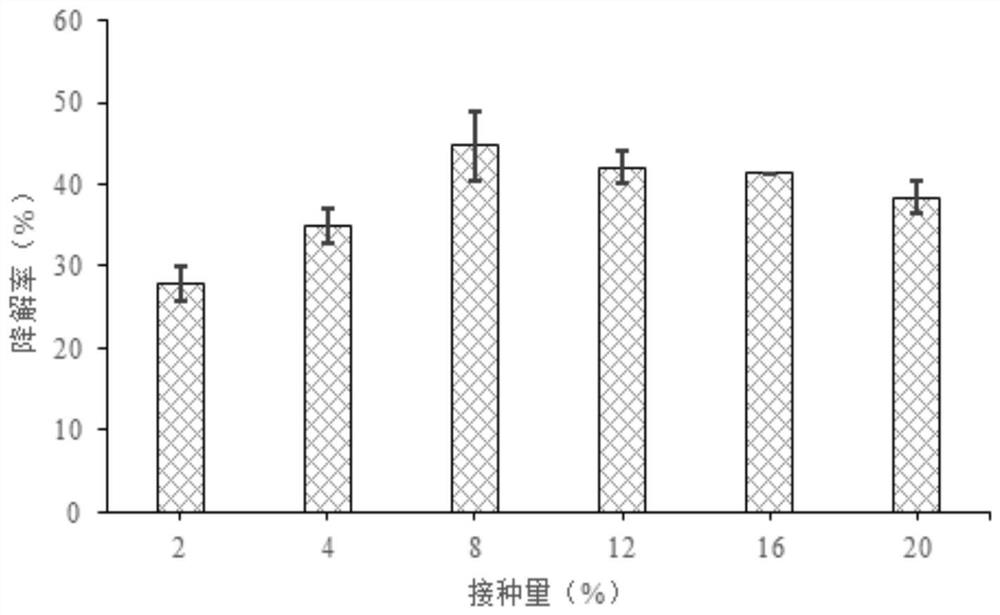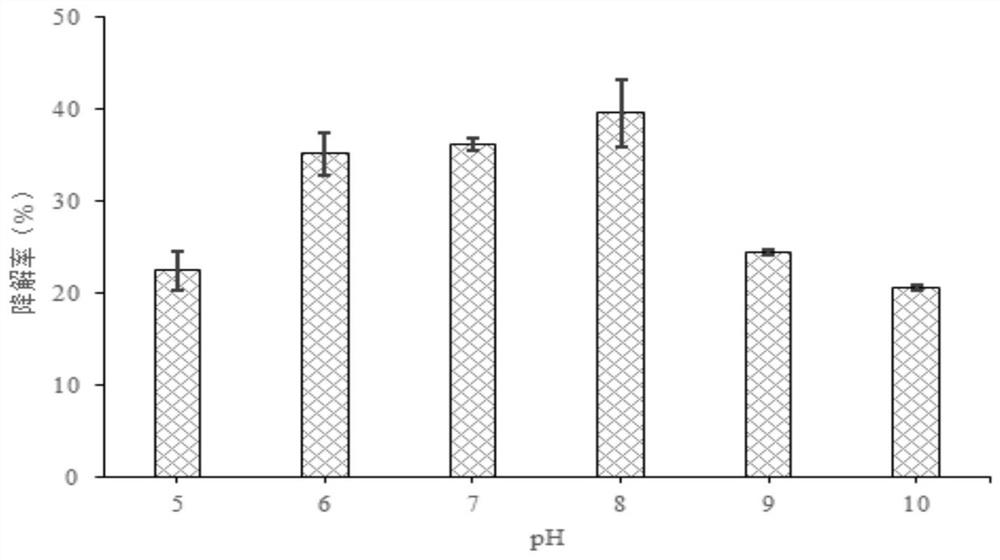Preparation and application of microbial agent for degrading quinclorac
A microbial agent and microbial technology, applied in the field of agricultural environmental soil remediation, can solve the problems of inhibiting the normal growth of crops, reducing production, and cutting off production, achieving the effects of low cost, promoting crop growth, and improving soil
- Summary
- Abstract
- Description
- Claims
- Application Information
AI Technical Summary
Problems solved by technology
Method used
Image
Examples
Embodiment 1
[0036] A microbial soil remediation agent is prepared by inoculating a microbial agent on a PDA medium to grow spores, and then inoculating it on a glucose-containing co-metabolism medium for fermentation; the microbial agent is Paecilomyces lilacinus.
[0037] The preparation method of microbial soil remediation agent:
[0038] (1) Inoculate the slant of the preserved strain Paecilomyces lilacinus GFDZ1 on the PDA solid medium, and culture it in a constant temperature incubator at 30°C for 5 days. After a large number of spores grow, add a small amount of sterilized inorganic salts to the plate culture medium, and scrape off the spores growing on the plate, filter with four layers of gauze to remove the mycelium, obtain the spore suspension, measure the absorbance of the spore suspension with a spectrophotometer, and make the suspension OD 600 = 3;
[0039] (2) The spore suspension is added to a co-metabolism medium with a certain inoculum amount for fermentation to obtain t...
Embodiment 2
[0045] The other components are the same as in Example 1, only co-metabolism medium with different components is used, as follows: ① Inorganic salt medium + 0.5% glucose (m / v, the unit is g / mL).
[0046] Among them, the formula of inorganic salt medium: K 2 HPO 4 1.0-1.5g, KH 2 PO 4 1.0-1.5g, NaCl 0.5-1.0g, MgSO 4 ·7H 2 O 0.2-0.5g, FeCl 3 0.05-0.07g, CaCl 2 0.02-0.05g, NH 4 NO 3 1.0-1.5g.
Embodiment 3
[0057] Effects of different inoculation volumes on the degradation of quinclorac by strain GFDZ1
[0058] With 2%, 4%, 8%, 12%, 16%, 20% inoculum size, the spore suspension was added to 50mL sterile co-metabolism medium (inorganic salt medium+0.5% glucose) and dichloroquine Acid concentration is in the 150mL Erlenmeyer flask of 50mg / L, is placed in 30 DEG C, cultivates 5d in the constant temperature shaker of 150r / min, after the completion of the cultivation, take a sample, detect the content of quinclorac in the sample with liquid chromatography, Adding the corresponding concentration of quinclorac and no spore suspension were set as control treatments, and each treatment was replicated three times.
[0059] The effects of different inoculum volumes on the degradation of quinclorac by strain GFDZ1 were as follows: figure 1 Shown, test result shows, when inoculum size is at 2%-8%, the degradation rate of quinclorac and the inoculum size of spore suspension present positive co...
PUM
 Login to View More
Login to View More Abstract
Description
Claims
Application Information
 Login to View More
Login to View More - R&D
- Intellectual Property
- Life Sciences
- Materials
- Tech Scout
- Unparalleled Data Quality
- Higher Quality Content
- 60% Fewer Hallucinations
Browse by: Latest US Patents, China's latest patents, Technical Efficacy Thesaurus, Application Domain, Technology Topic, Popular Technical Reports.
© 2025 PatSnap. All rights reserved.Legal|Privacy policy|Modern Slavery Act Transparency Statement|Sitemap|About US| Contact US: help@patsnap.com



